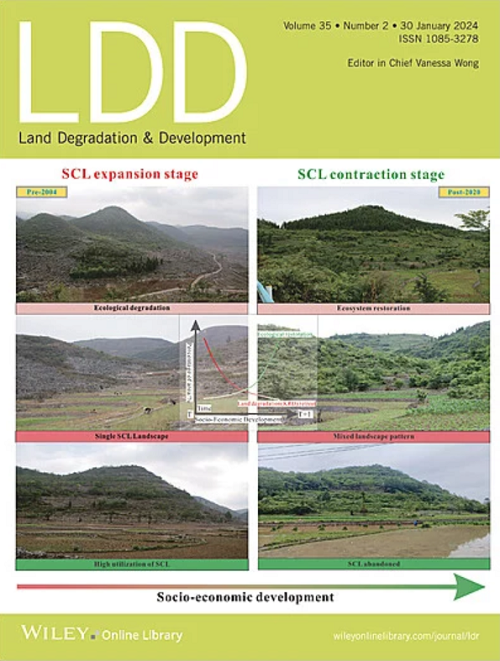人工补种促进青藏高原东部高寒沙质草甸生物多样性恢复
IF 3.6
2区 农林科学
Q2 ENVIRONMENTAL SCIENCES
引用次数: 0
摘要
由于气候变暖和过度放牧,高寒草原沙漠化严重。人工补种已被广泛应用于高寒沙质草地的恢复。然而,其在提高生物多样性方面的有效性尚不清楚,特别是地上植物多样性和地下微生物多样性之间的响应是否一致。为了研究人工补播对沙质草甸植物和微生物多样性的影响,我们对青藏高原东部经过人工补播、自然恢复和仍为沙质草甸的高寒草地进行了实地调查。结果表明,人工补播对沙质草甸地上植物群落和地下土壤微生物群落的恢复效果不一致,从而改变了地上和地下生物多样性的典型关系。人工补播显著提高了沙质草甸的植物多样性,恢复后的草甸群落Shannon-Wiener指数提高了67% (p < 0.01),但对土壤微生物多样性的影响不明显。通过重新播种改善植被覆盖、植物多样性和真菌丰富度,引进新的植物物种。此外,人工补播改变了土壤性质,使土壤pH值降低了0.35个单位,改变了土壤养分含量,进而影响了植物和微生物群落的组成和结构。研究结果对区域生态安全和高寒草甸的可持续发展具有重要意义。本文章由计算机程序翻译,如有差异,请以英文原文为准。
Artificial Reseeding Promotes Biodiversity Restoration in Alpine Sandy Meadow of the Eastern Qinghai-Tibet Plateau
Alpine grasslands have undergone severe desertification due to climate warming and overgrazing. Artificial reseeding has been widely employed for the restoration of these alpine sandy grasslands. However, its effectiveness in enhancing biodiversity remains unclear, particularly regarding the consistency of responses between aboveground plant diversity and belowground microbial diversity. To investigate the impacts of artificial reseeding on plant and microbial diversity of sandy meadows, we conducted field investigations in alpine grasslands of the eastern Qinghai-Tibet Plateau that had undergone artificial reseeding, natural restoration, or remained as sandy meadows. The findings revealed that artificial reseeding yields inconsistent restoration outcomes for aboveground plant communities and belowground soil microbial communities in sandy meadows, thereby altering the typical relationships between above- and belowground biodiversity. Artificial reseeding significantly promoted plant diversity in sandy meadows, with the Shannon-Wiener index of restored meadow communities increased by 67% (p < 0.01), while its impact on restoring soil microbial diversity was less pronounced. Introducing new plant species through reseeding improved vegetation cover, plant diversity, and fungal richness. In addition, artificial reseeding altered soil properties, reducing soil pH by 0.35 units and altering soil nutrient content, which in turn influenced the composition and structure of plant and microbial communities. These results have essential implications for regional ecological security and the sustainable development of alpine meadows.
求助全文
通过发布文献求助,成功后即可免费获取论文全文。
去求助
来源期刊

Land Degradation & Development
农林科学-环境科学
CiteScore
7.70
自引率
8.50%
发文量
379
审稿时长
5.5 months
期刊介绍:
Land Degradation & Development is an international journal which seeks to promote rational study of the recognition, monitoring, control and rehabilitation of degradation in terrestrial environments. The journal focuses on:
- what land degradation is;
- what causes land degradation;
- the impacts of land degradation
- the scale of land degradation;
- the history, current status or future trends of land degradation;
- avoidance, mitigation and control of land degradation;
- remedial actions to rehabilitate or restore degraded land;
- sustainable land management.
 求助内容:
求助内容: 应助结果提醒方式:
应助结果提醒方式:


